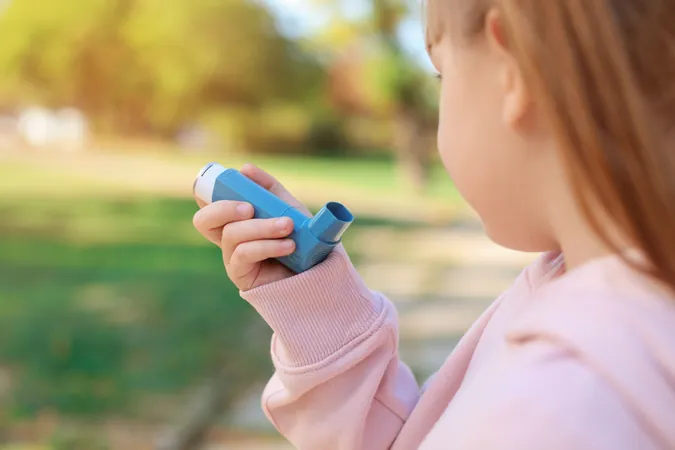
Alarming New Study Reveals Early Ozone Exposure Linked to Asthma in Young Children!
2025-04-04
Author: Daniel
A groundbreaking study published in JAMA Open Network has revealed a concerning connection between early-life exposure to ambient ozone (O3) and an increased risk of asthma and wheezing in young children. This research, part of the ECHO-PATHWAYS consortium, highlights that even in areas with relatively low ozone levels, exposure during a child's first two years can negatively impact their respiratory health as they grow.
Understanding Ozone Levels and Health Risks
Ozone is recognized as the most frequently exceeded air pollutant standard in the United States. While brief exposure periods are known to trigger acute respiratory issues, the long-term implications of postnatal ozone exposure, particularly in conjunction with other air pollutants, have not been extensively studied—until now.
Study Insights
Researchers conducted a comprehensive analysis drawing data from six cities across the U.S. The cohort included 1,188 children who were born full term (≥37 weeks). By gathering complete airway surveys and tracking residential histories from birth to age two, the study spanned from 2007 to 2023, providing a thorough long-term insight on how environmental factors influence respiratory outcomes.
To measure graduates' ozone exposure, a validated model was applied based on their residential addresses. Additionally, scientists explored how ozone interacts with two other prevalent air pollutants: fine particulate matter (PM2.5) and nitrogen dioxide (NO2), both known to adversely affect respiratory health.
Key Findings and Implications
At ages 4 to 6, 12.3% of participants had been diagnosed with asthma, while 15.8% experienced wheezing. Alarmingly, for every 2-parts-per-billion (ppb) increase in ozone concentration, there was a striking 31% greater likelihood of developing asthma (odds ratio [OR], 1.31) and a 30% increased chance of wheezing (OR, 1.30) during this critical age range.
Interestingly, these associations did not continue to hold at ages 8 to 9 years. Analysis adjusting for socioeconomic and neighborhood factors showed that the link between ozone exposure and the respiratory ailments dissipated by this stage of childhood.
Nevertheless, advanced statistical methods (Bayesian kernel machine regression analysis) affirmed that early-life ozone exposure, especially in combination with other air pollutants, plays a significant role in respiratory health outcomes in early childhood.
A Call to Action for Air Quality Regulations
The findings of this study underscore a vital public health imperative: regulating and minimizing exposure to ambient ozone could significantly help alleviate the burden of asthma on children in the U.S. Although the effects may wane as children grow older, this research emphasizes the urgent need for air quality interventions aimed at protecting vulnerable populations.
In conclusion, even low doses of ozone can create long-lasting impacts on a child's respiratory health in their formative years. Legislative measures are essential to safeguard the air quality and ultimately protect children from developing asthma and wheezing, a step critical for reducing the overarching public health crisis linked to these conditions.
This alarming study adds to the growing body of research on air pollution's effects and advocates for immediate and effective strategies to improve air quality for the well-being of our children.


 Brasil (PT)
Brasil (PT)
 Canada (EN)
Canada (EN)
 Chile (ES)
Chile (ES)
 Česko (CS)
Česko (CS)
 대한민국 (KO)
대한민국 (KO)
 España (ES)
España (ES)
 France (FR)
France (FR)
 Hong Kong (EN)
Hong Kong (EN)
 Italia (IT)
Italia (IT)
 日本 (JA)
日本 (JA)
 Magyarország (HU)
Magyarország (HU)
 Norge (NO)
Norge (NO)
 Polska (PL)
Polska (PL)
 Schweiz (DE)
Schweiz (DE)
 Singapore (EN)
Singapore (EN)
 Sverige (SV)
Sverige (SV)
 Suomi (FI)
Suomi (FI)
 Türkiye (TR)
Türkiye (TR)
 الإمارات العربية المتحدة (AR)
الإمارات العربية المتحدة (AR)